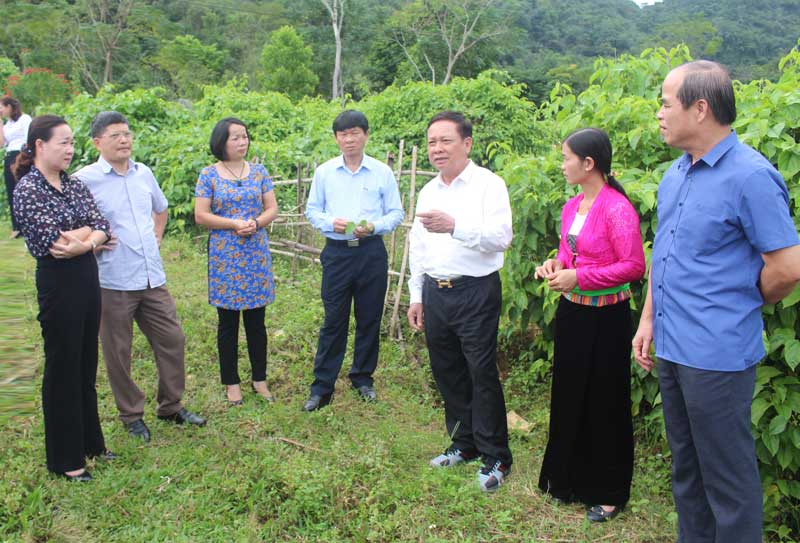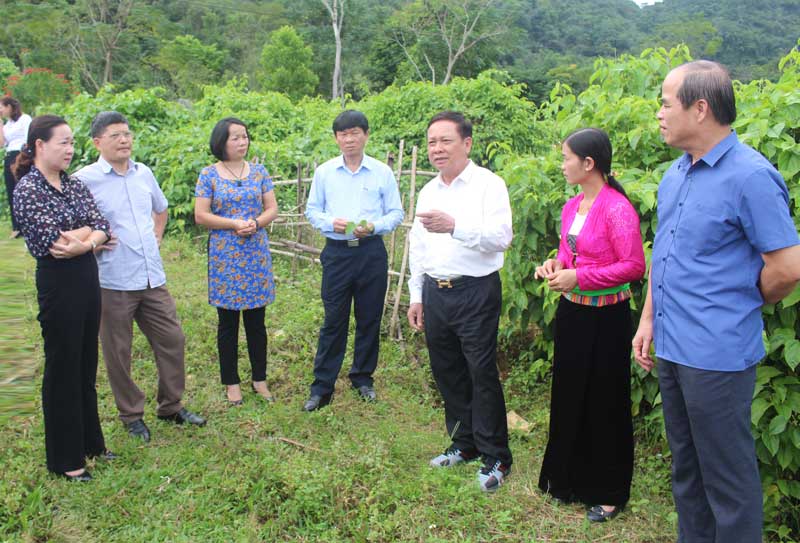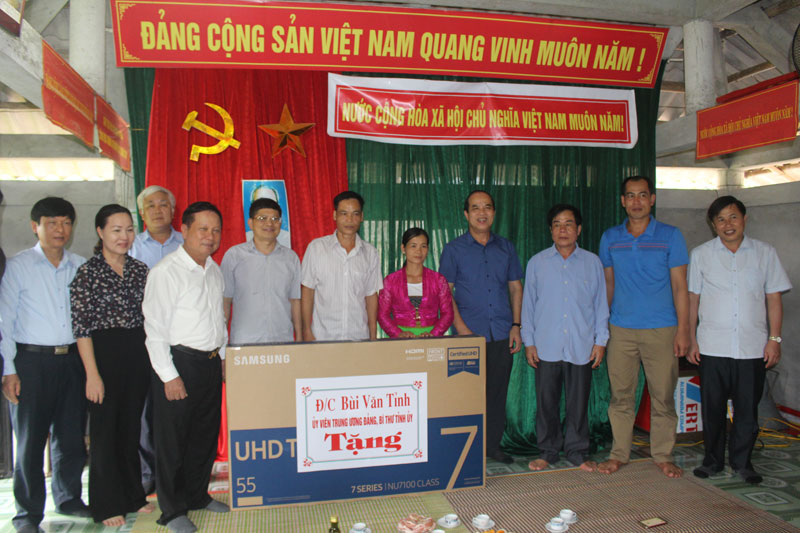
(HBO) – Bui Van Tinh, Party Central Committee member and Secretary of the Party Committee of Hoa Binh province, made a field trip to sachi farms in Khang and Bua Lay hamlets, Dich Giao commune, Tan Lac district on November 14.
All parts of sachi (scientifically known as Plukenetia volubilis), including nuts, trunk, leaves and roots, can
be used to make food, cosmetics and pharmaceutical products. In April 2017,
with the support of INCA Vietnam JSC, households in Bua Lay hamlet, Dich Giao
commune, planted sachi trees on 1.2 hectares of land on a pilot basis. One year
later, they harvested nearly 1.3 tonnes of dried sachi nuts per ha, earning
some 80 million VND.
Each ha of sachi produces from 1-1.3 tonnes of dried nuts in the
first crop, and over 3 tonnes from the third crop. Annual profit is estimated
at an average 150-200 million Vietnam dong. Sachi’s advantage lies in the long
duration of nut harvesting which lasts for between 12 and 15 years. Sachi is
ready for harvest eight months after it is planted. The tree suits different
types of soil.
INCA Vietnam has supplied sachi saplings to local farmers and sent
technicians to guide them in how to cultivate and harvest sachi. Of note, the
company buys all products for farmers. The trial cultivation in Tam Lac
district has showed that sachi suits the local climate and soil.
Bui Van Tinh, Party Central
Committee member and Secretary of the provincial Party Committee, visits a
sachi farm of INCA Vietnam in Khang hamlet, Dich Giao commune, Tan Lac
district.

Bui Van Tinh, Secretary of the
provincial Party Committee, visits and presents gifts to people in Khang hamlet,
Dich Giao commune, Tan Lac district.

INCA Vietnam aims to form a concentrated material zone of 500 ha
of sachi in Tan Lac district, along with building a factory to ensure
on-the-sport processing.
Tan Lac district will work to ensure the formation of the area
when INCA Vietnam makes legal commitments to buy all products for local
farmers.
On this occasion, Tinh presented a set of television to the
cultural house of Khang hamlet./.
Hoa Binh province is undergoing a dynamic transformation amid Vietnam’s national digital transition. Building on Poliburo’s Resolution No. 57-NQ/TW on breakthroughs in science, technology, innovation, and national digital transformation, the province has rolled out a wide range of practical action plans. A standout initiative is the "Digital Literacy for All” movement, an effort to ensure that no one is left behind in the digital era.
Hoa Binh province is undergoing a dynamic transformation in the wake of the national digital transformation movement. Building on Resolution No. 57-NQ/TW of the Politburo on breakthroughs in science, technology, innovation, and national digital transformation, the province has implemented a wide range of practical action plans. A standout initiative is the "Digital Literacy for All” movement ambitious effort to ensure that no one is left behind in the digital age.
With a spirit of unity and proactive problem-solving, the Party Committee, the government and the people of Dong Lai Commune (Tan Lac District) have made great strides in implementing the resolutions of the 24th Party Congress of the commune for the 2020 - 2025 term. Focusing on leadership and practical actions, the commune has brought the Party’s resolutions into daily life, creating strong impacts and pushing the local development forward.
Amid the nationwide push for digital transformation, young people in Hoa Binh Province are stepping up as dynamic pioneers, applying technology to enhance Youth Union operations and expand the reach of youth-led initiatives. Through creativity and adaptability, Youth Union organizations at all levels have introduced a series of practical solutions, contributing to modern governance and community development.
In recent years, An Nghia commune, located in Lac Son district, has stepped up administrative reform, focusing on improving the quality and efficiency of its single-window service unit for receiving and processing administrative procedures. These improvements have helped create favourable conditions for local residents and organisations to handle administrative procedures, contributing to the commune’s broader socio-economic development.
The Prime Minister-approved master plan to develop the multi-use value of forests ecosystems through 2030, with a vision to 2050, aims to improve the management and sustainable use of forest resources, create jobs, increase incomes, and improve the living standards of ethnic minorities, people in mountainous and remote areas, forest workers and those living near forests.




